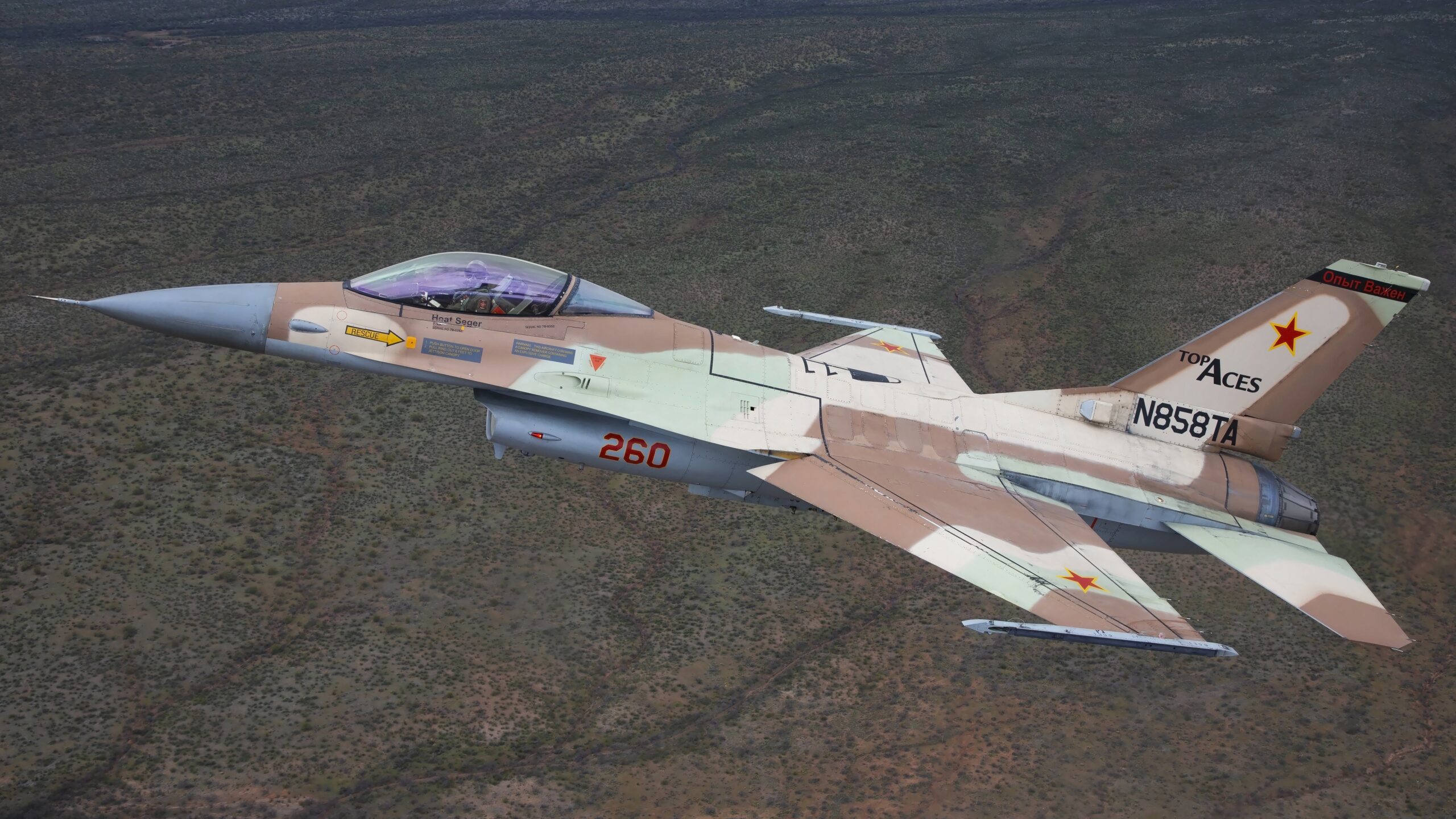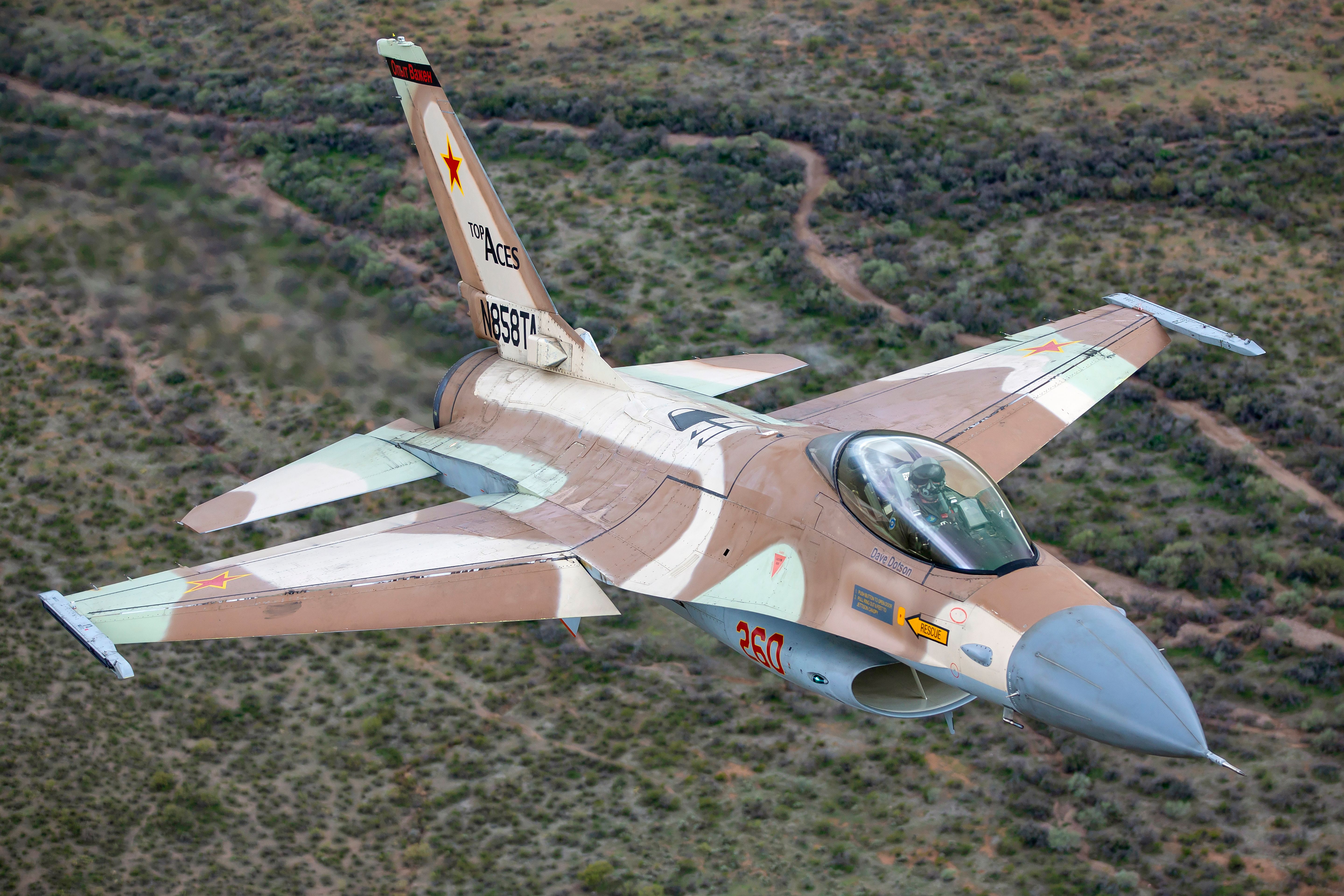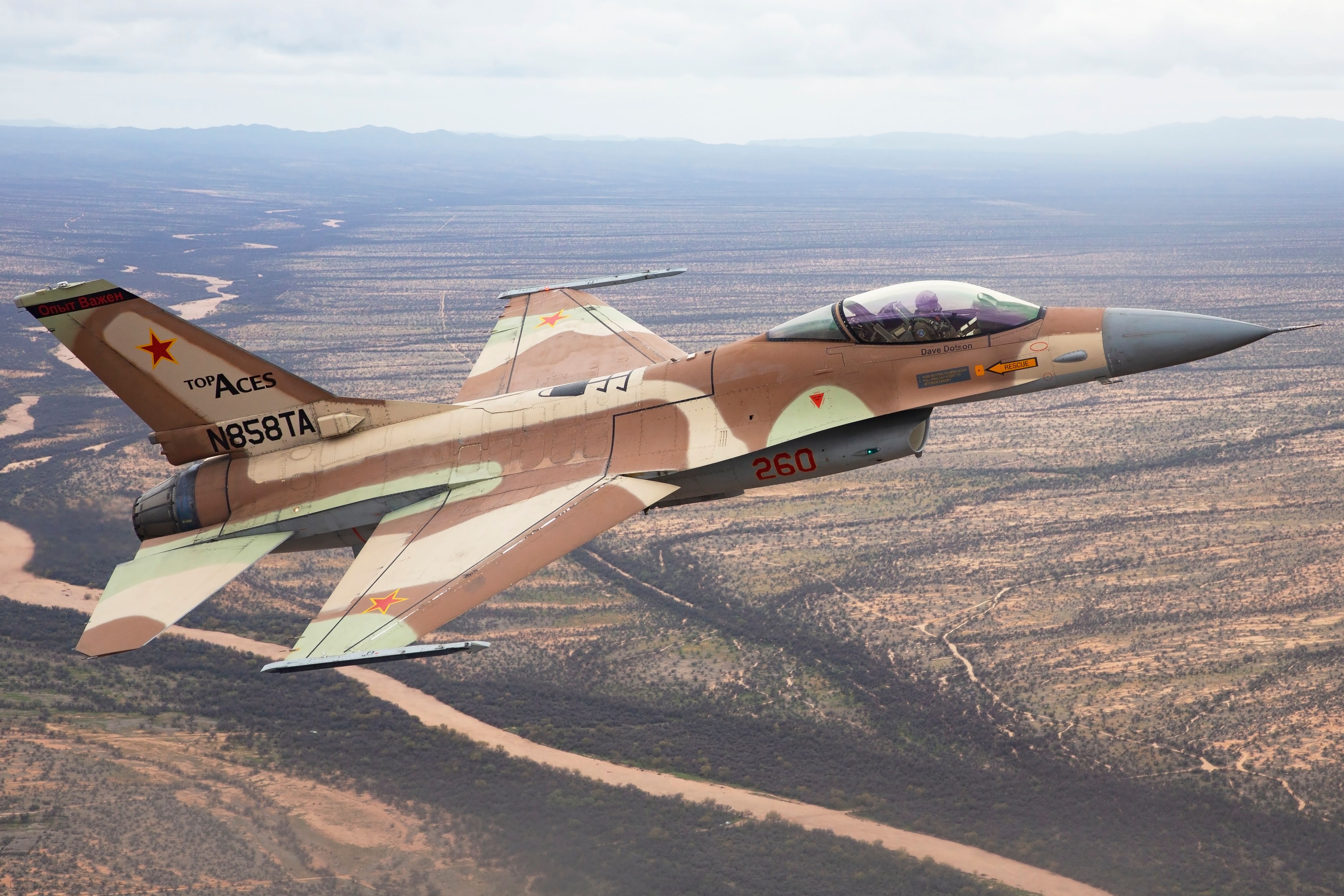Recently, Simple Flying was honored to interview Top Aces’ President Russ Quinn, a former United States Air Force
aggressor pilot. Top Aces is a world-leading adversary air provider, serving multiple air forces by providing realistic and updated aircraft for air forces to scrimmage against.
Why is adversary air necessary?
As Russ Quinn explained so succinctly to Simple Flying, the mission of adversary air is;
“To know the threat, to teach the threat and to replicate the threat as accurately as we can.”
So, by providing updated Alpha Jets, A-4 Skyhawks, and early model F-16s
– namely former Israeli Air Force F-16 A/B “Netz” (Hebrew for Falcon) packing Pratt & Whitney
F100-PW-220Es, Top Aces and other such firms can deploy privately owned and maintained aircraft to support training squadrons. Top Aces’ pilots are mostly pilots with over 3,000 hours in fighter jets who can now take that experience and support those about to deploy around the world while having a more stable personal life without being rotated through duty stations.
Photo: Aviation Photo Crew | Red Aces
However, one can review a previous guide on aggressor squadrons:
Considering that A-4s and F-16s have been two of the US Military’s aggressor jet platforms and Top Aces employs former aggressor pilots – no surprise that Top Aces has gotten simulated kills on fifth-generation F-35s from their platforms. Another source has confirmed this to Simple Flying.
F-35 pilot and published author Hasard Lee also flew with Top Aces and took video as one can watch below:
The raison d’etre or reason for existing for Top Aces is so that, to quote Quinn again,
“It’s all about readiness, right? Everybody’s tuned up, you know, so that when they need to go, they go and they go with a very, very high state of readiness.”
So how do the A-4s and F-16s help get fighter pilots up to proper readiness? See the A-4s and F-16s have been upgraded.
Upgraded jets for a new mission
Top Aces has upgraded their A-4s and F-16s with a proprietary Advanced Aggressor Mission System (AAMS). The AAMS, according to Top Aces, includes all these upgrades:
- Active Electronically Scanned Array (AESA) air-to-air radar
- Helmet-Mounted Cueing System (HMCS) – currently the Thales Scorpion HMCS
- Tactical datalink communications between aircraft and other entities
- Infrared Search and Track (IRST) systems by using Leonardo’s SkyWard
- High Fidelity Weapon Simulation allowing accurate replication of adversary tactics
- Advanced Electronic Attack pod employment and passive RF detection capabilities
- An array of tactical functions coordinating the above systems to provide a spectrum of realistic adversary effects
- Aerial refueling capability
The upgrades were first installed on the Douglas A-4 Skyhawks in Top Aces’ care first, turning a visual attack jet into an aggressor jet that comes with radar plus IRST to find targets, electronic attack capabilities to simulate a potential foe’s jamming abilities, a helmet cueing system to simulate current Russian-made and Chinese-made aircraft that have their air-to-air missiles lock onto targets, and more. One can watch a tour Top Aces gave to The War Zone brought up in the interview:
According to Quinn, having an IRST allows tracking the heat signature of fifth-generation fighter jets like the F-22 Raptor and F-35 Lightning II (aka Panther)—Leonardo’s Skyward. Below one can see how the F-16 carries the IRST as a pod:
However, with open systems architecture, AAMS does not need to be dependent on a particular sensor, such as Skyward or the AESA radar.
Of course, having modern avionics and reliable airframes requires maintainers. Top Aces recruits and retains maintainers who previously worked on those airframes for two to three decades. The experience helps the maintainers work quickly to get the adversary jets back into the air to accomplish the mission.
As Quinn shared with Simple Flying, summarizing the mission and somewhat abridged for clarity,
“We’re trying to replicate the threat and heat signature management for an F-22 or an F-35, it’s quite important. If we end up in a scenario where we’re able to, you know, track one of these, one of these men and women, and we’re able to track them with a heat signature… We can come back. We can show em, ‘Okay, here’s where I got you here’s why this happened.”
Next, we discuss how that learning happens and the importance of debriefing.
The importance of debriefing – and how Top Aces supports that
Quinn also stressed to Simple Flying that the point of scrimmages with Top Aces aircraft was to use the pool of, “Retired men and women that want to continue to teach” and help with “readiness.” To quote former United States Air Force A-10 Warthog attack pilot Kim “KC” Campbell from her book Flying in the Face of Fear,
“Perfection is a goal, never a reality, in a fighter pilot’s mind. We’re always striving to improve, and a fighter pilot debrief allows us to do just that. In a debrief, we talk about our mission objectives. Did we meet them? Where did we succeed, and where did we fail? We check our rank at the door so the more junior members can input freely and can provide feedback to the more senior members in the flight. We hold each other accountable. We don’t take it personally because it’s important that we all learn from each other’s mistakes.”
Top Aces can support this goal of ” learning from each other’s mistakes” with all the telemetry collected on their aircraft. For instance, the F-16s pack an Air Combat Maneuvering Instrumentation (ACMI) pod from Cubic Corporation called P5 Combat Training System (P5CTS) pods, which are on contract from the United States Air Force.
In Cubic’s February 22, 2021, statement, Cubic shared the pods display the live-air picture, record mission data, adjudicate weapons engagements, and relay Time, Space, and Positioning Information (TSPI) between participating aircraft during training sorties. The pods also use GPS data to help with their work. According to a Cubic factsheet, the P5CTS pods support a system that supports weapon scoring of even precision weapons and a “Computer Generated Threat System”.
Photo: Aviation Photo Crew | Top Aces
But that’s not the only tool Top Aces has to provide telemetry to support debriefings. Another tool is the video that Top Aces aircraft record from the head-up display (HUD), the Scorpion helmet-mounted sight, and even the aircraft multi-functional displays.
Bottom line: Realistic training with new avionics in old airframes
Top Aces provides realistic training via new avionics integrated into old airframes, some of whom, like the former Israeli Air Force F-16A/B “Netz” aircraft, have seen actual combat. Although the market for new aggressor aircraft is tight because of the need to add to Ukraine’s F-16 fleet – Top Aces remains searching for additional jets. The training Top Aces provides goes beyond adversary air – but also can support training Joint Terminal Attack Controllers or JTACs calling in airstrikes, electronic warfare training, and even scrimmage with warships simulating inbound combat aircraft and missiles. We’ll let Russ Quinn have the last word;
“Our job, right, as aggressors are if the student on the other side, or the more senior pilot on the other side, makes a mistake that the enemy would be able to capitalize on and execute a kill – simulated, of course. Then, we want to bring that to the debrief and walk through those decisions on why that happened so that it doesn’t happen again.”



